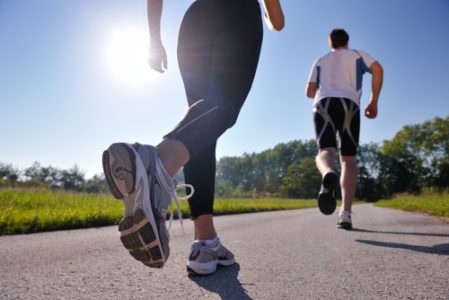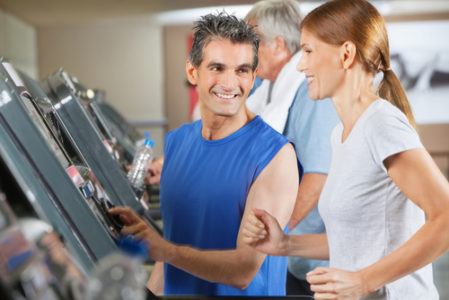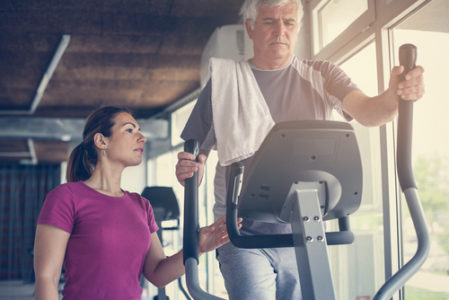
What’s the Best Cardio Exercise Machine for Injury Recovery?
Categories: Back Pain / Exercises / General Orthopedics / Pain Management
As the summer ends and we transition to autumn, many passionate runners will be heading indoors. And, while runners may prefer the natural feeling of running outside, there are also benefits to indoor cardio machines. Most gyms have several types of cardio machines – each of which have different orthopedic benefits.
Depending on your condition, one of these machines may be perfect for cultivating your recovery. In this blog post, we’ll discuss which cardio machine is the best for you, given your goals and limitations.
Running Outdoors Vs. Running In a Gym
If you’re running regularly, then you’ve likely engaged in this familiar conversation at least once before. The truth is, though – neither method is necessarily better than the other. Each style has its own specific advantages, and runners of different styles tend to favor each. If you’re curious about which is best for you, then consider consulting a professional.
The Advantages of Running Outdoors
For people who run in marathons and other outdoor race events, running outdoors is generally the preferred option. This is because they often favor running in the same conditions that they’ll eventually be racing in. Generally, you should complete at least 60% of your training in the same conditions as the race you’re training for. When running outdoors, you’ll also encounter changes in terrain – which, from an orthopedics standpoint, is crucial.
Slight slopes and gradually changing terrain are natural, and so are the conditions that you’ll encounter in an outdoor race. Training in this manner – either exclusively, or with some treadmill time – will prepare your muscles in the appropriate manner. We can help you during this training process, with injury prevention and gradual increases in intensity.

The Advantages of Running in a Gym
Running on a cardio machine at home or the gym carries many advantages as well. Health benefits aside, runners no longer have to worry about external factors– such as light, safety, and weather. It’s a very convenient solution to running, when the conditions outside can be unfavorable.
So, this is the perfect solution for people looking to exercise – whether for weight loss purposes, or to meet new fitness goals. However, as with all other forms of exercise, there’s a point where your efforts can be counterproductive. An orthopedist can help you determine the best rate at which you should exercise.
Cardio Machines
If you exercise at a gym, then you’ve likely run on the treadmill before. But what about the other cardio machines? Each machine is suitable for a different type of exercise. And depending on your goals, there may be a different answer.
Some of these cardio machines are also good for patients recovering from injuries, such as sprained ankles, seeking low-impact exercise. An orthopedics professional can make a recommendation based on your condition, and recovery status.
1. Treadmill
As the most common cardio machine, the treadmill fulfills plenty of common goals for exercise enthusiasts. For runners who are planning to enter a race, this is the ideal machine. It is also the best machine for losing weight, as it provides calorie-burning exercise. Treadmills are the perfect exercise machine for HIIT training, or high intensity high interval exercise.
Treadmills can, however, present issues for patients with knee injuries. Because the treadmill simulates running on a flat surface, patients are repeatedly moving the legs and knees with the same motions. Without adequate periods of rest between exercise days, this can cause chronic injuries to develop. This means that runners bring the legs up and down in a rapid motion, which can also lead to orthopedic injuries.

2. Exercise Bike
This common method of cardio exercise is just as common in the home as it is in the gym. As with the treadmill, you can easily engage in both aerobic and anaerobic exercise on a bike. So, depending on your exercise goals, you might benefit from switching between these two methods of exercise. It is an excellent way to burn calories.
The exercise bike does, however, carry other benefits as well. It’s a great method of exercise for people with lower back issues. For people with lower back issues, this is a great method of exercise. It causes the spinal juices to flow, which aids in improving the range of motion. Riding an exercise bike is also a smooth, easy way for seniors to exercise during the winter.
3. Elliptical
The elliptical is intended as an alternative to the treadmill. Equipped with handles, the elliptical offers patients a full-body workout, using both the arms and legs. This exercise will not burn as many calories, and may not necessarily offer the same weight loss benefits. It will, however, improve balance.
Because the patient’s feet do not leave the ground, this is also considered low-impact exercise. So, the elliptical is a fantastic option for orthopedics patients who are recovering, and seeking the best way to exercise.

4. Stairmaster
The stair master simulates climbing a set of stairs, which carries a few different benefits. First, it does burn calories– though not as many as running on the treadmill might. However, because of the motion required when climbing stairs, as well as the resistance, the stair master also develops lower body strength.
So, if your main goal is to burn calories, then the stair master may not be the optimal choice. But, the stair master does offer a convenient way to engage in cardio, while also building strength. And, the stair master is also a relatively low-impact method of exercise – meaning that it won’t be hard on the knees.
Long Island Orthopedist
If you’ve suffered from injuries in the past, then you’ll be able to again engage in exercising, and improving your body. However, to do so safely, you need to go about this carefully. Our specialized orthopedists can give you the guidance you need in ensuring safe, constructive exercise.
